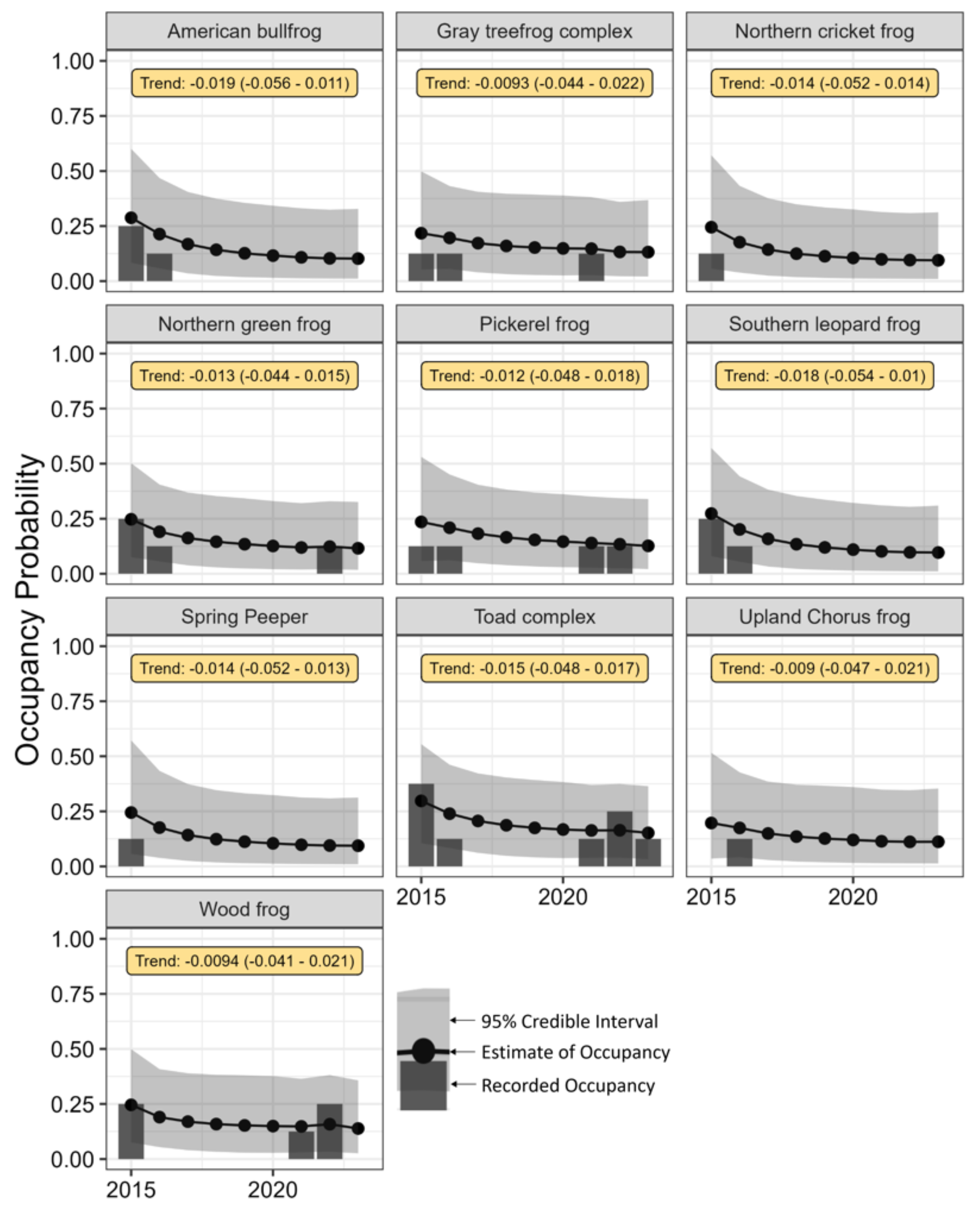Part of a series of articles titled Amphibian Monitoring in the National Capital Region.
Article
Harpers Ferry Amphibian Monitoring 2023

NPS / C. Shafer
Home to at least 10 amphibian species!
We monitor wetlands at Harpers Ferry National Historical Park. Field teams visit wetlands and streams, recording which amphibian species they observe and in which sites. Looking across all sites in a park, they generate a measure of species “occupancy,” that shows what proportion of sites are occupied by a particular species.
We want to know, “is there a change in occupancy over time?”
A few amphibian species are found outside of the wetland environments that we monitor (like terrestrial, red-backed salamanders and burrowing, eastern spadefoot toads). These species may live in the park, but our monitoring is not designed to document them. While we do record incidental sightings, they are excluded from the data analysis.
Wetland Amphibians
In 2023, we observed one wetland species. Since amphibian monitoring began in Harpers Ferry in 2015, we have observed a total of 10 wetland species (see Figure 1). Lower numbers in 2023 are the result of fewer visits to monitoring sites. Usually there are two each year. Field crews visited 8 wetlands once between April and May of 2023.
Toads were the most abundant amphibian detected (17 egg masses) and were observed at the most sites.
See below for how to read this figure!
Wetland Amphibian Occupancy Trends

NPS
How to read the wetland occupancy figure
- Dark gray bars show the occupancy based on raw amphibian sightings
- Black dots (connected by black lines) are estimates of occupancy. (Estimates help fill in observation gaps since amphibians can easily hide and avoid detection, so that there are usually more individuals present than can be counted by monitoring teams)
- Light gray shaded areas are 95% credible intervals
- "Gray treefrog complex" and "Toad complex" refer to closely related gray treefrog species and toad species are grouped together
- The “Trend” text box at the top of each graph contains a numeric trend value and a color that shows the direction of estimated occupancy trends. Blue is positive, white is neutral, yellow is slightly negative, and red is negative. The numbers in the parentheses represent the 95% credible intervals
- Species are listed in alphabetical order by their common names
Last updated: March 18, 2024
